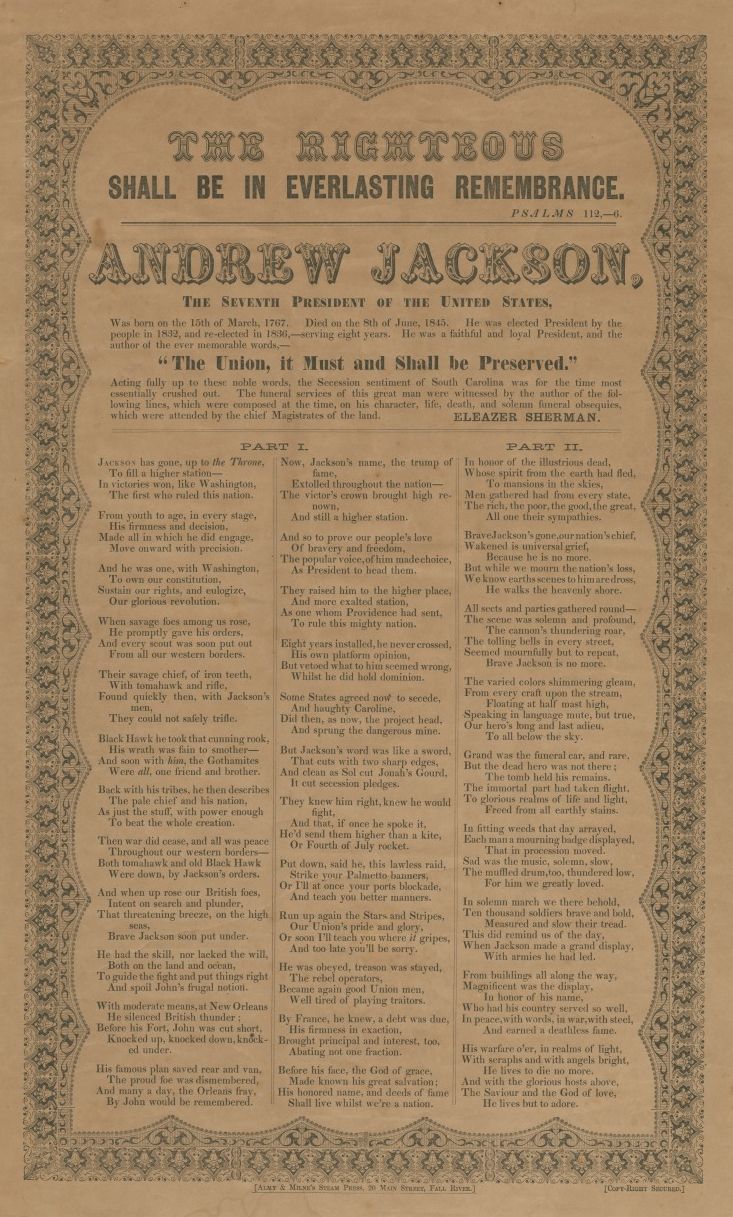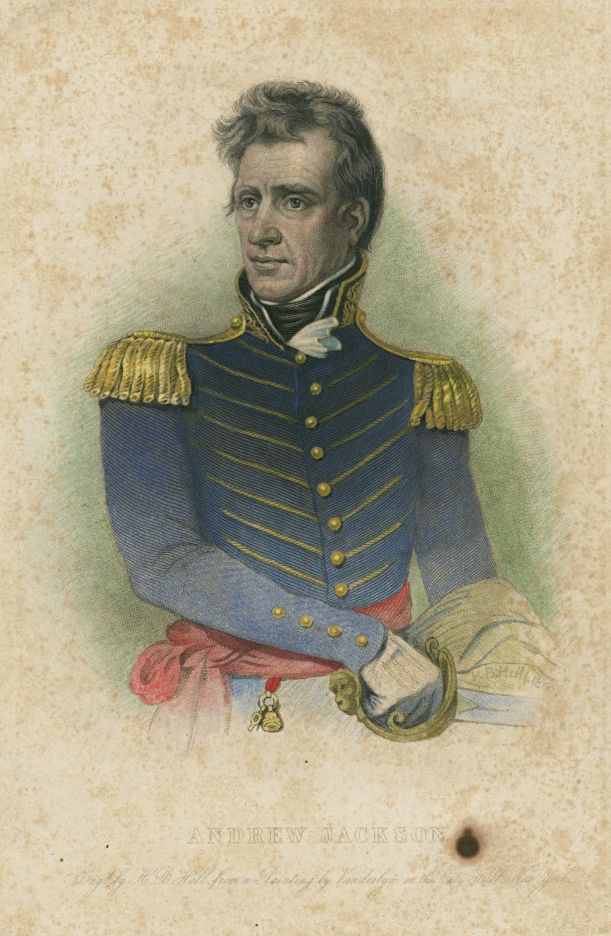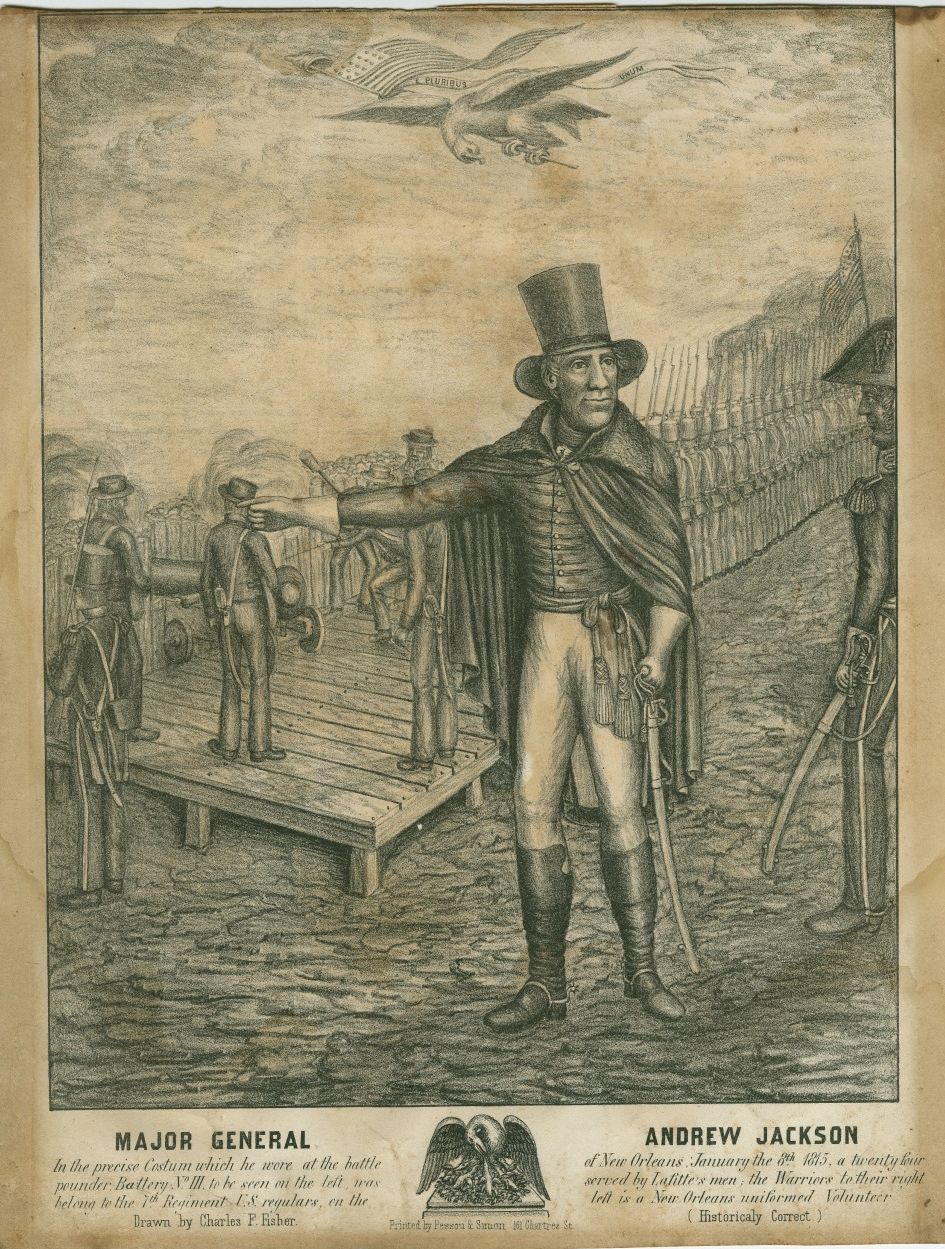At an 1830 dinner, Andrew Jackson famously rebuked John C. Calhoun and other pro-nullification officials with the toast: “Our Federal Union, it must be preserved!” Jackson’s words were inscribed at the base of Clark Mills’s equestrian statue in Washington. As the country drifted toward civil war in the 1850s, other artistic evocations of the late president as a unifying hero began to appear.

Pro-Union verses memorializing Andrew Jackson
1862; letterpress broadside
by Eleazer Sherman, author; Almy and Milne, printer
The Historic New Orleans Collection, 2012.0405.4
Despite its resemblance to many 1845 memorials to Jackson, this is a Civil War–era broadside that evokes Jackson's unyielding defense of the Union. Sherman's poem pointedly references the Nullification Crisis of 1832, wherein South Carolina had threatened to secede during Jackson's first term.

Andrew Jackson
1860; colored engraving
by H. B. Hall, engraver; after John Vanderlyn, artist
The Historic New Orleans Collection, gift of Boyd Cruise and Harold Schilke, 1959.160.14
Andrew Jackson's popularity as a subject at midcentury may have been a cultural response to the looming division between North and South, as artists sought to evoke images of American unity.

Major General Andrew Jackson
1856; lithograph
by Charles F. Fisher, draftsman (artist); Pessou and Simon, lithographer
The Historic New Orleans Collection, gift of Symphony Book Fair, 2009.0283
An unusual mid-nineteenth-century print produced in New Orleans shows Old Hickory wearing a top hat instead of the cocked hat or chapeau bras that he is generally thought to have worn in 1815.
